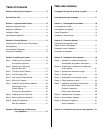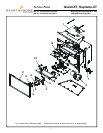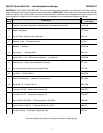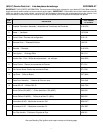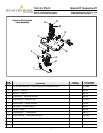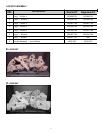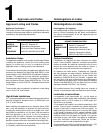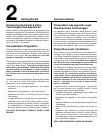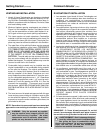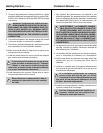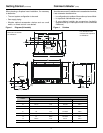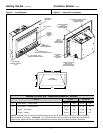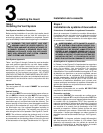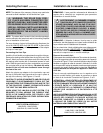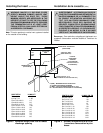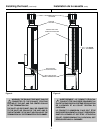Special offers from our partners!

Find Replacement BBQ Parts for 20,308 Models. Repair your BBQ today.

12
!
!
Getting Started (continued)
VENTING AND INSTALLATION
1. Hearth & Home Technologies gas inserts are designed
for recessed installations into solid fuel Masonry or Fac-
tory Built Non Combustible fireplaces that have been in-
stalled in accordance with the National, Provincial, State
and local building codes.
2. Minimum fireplace opening requirements are shown in
Figure 2 of this installation manual. The firebrick (refrac-
tory) can be removed from a factory built fireplace in or-
der to gain minimum gas insert opening requirements.
3. This insert requires no hearth extensions. Combustible
material on the floor may be installed up to the insert. Do
not obstruct the lower grill of the insert. The original fire-
place may never be returned to solid fuel in this condition.
4. The metal floor of the solid fuel firebox may be removed
to facilitate the installation of the insert. CLEARANCE
TO COMBUSTIBLE MATERIAL UNDER THE IN-
SERT IS 1/4”. YOU MUST USE THE LEVELING
LEGS TO RAISE THE INSERT A MINIMUM OF 1/4”
IF THE INSERT IS TO SIT ON COMBUSTIBLE
MATERIAL. The side walls and top structure of the fire-
box may not be altered with the exception of removable
baffles and dampers. The original fireplace may never be
returned to solid fuel in this condition.
5. Combustible facing material may be installed over the
original combustible or non-combustible facing material
on the solid fuel fireplace. The original specified clear-
ances of a factory-built fireplace must be maintained,
with the exception of the hearth. Clearances on a ma-
sonry fireplace must be maintained at 12” from the open-
ing for combustible projections over 1 1/2”. Clearances
for combustible projections under 1 1/2” must be main-
tained at 6” from the opening per NFPA 211. Plan the
surround size accordingly. A surround must be used
with the insert. UNDER NO CIRCUMSTANCE CAN COM-
BUSTIBLE MATERIAL BE PLACED BEHIND THE SUR-
ROUND!
6. The insert surround is tested and approved with this gas
insert and may cover existing air circulation vents or grills
on the solid fuel fireplace it is installed into. Should the
surround not cover the entire ventilation grill surface, the
grill should be left open.
NOTE: Decorative trim surrounds have been tested and
approved to cover existing air circulation vents or grills.
WARNING: Only the surround as supplied,
may be used to cover integral grills on the
solid fuel-burning fireplace. No other
components such as shrouds, sheet metal
plates, etc. may be used to seal off vents.
Comment débuter (suite)
ÉVACUATION ET INSTALLATION
1. Les cassettes à gaz Hearth & Home Technologies sont
conçues pour être encastrées dans des cheminées en
matériaux non combustibles, en maçonnerie ou
préfabriquées, à combustible solide, qui ont été installées
conformément aux codes de construction nationaux,
provinciaux et locaux.
2. Les spécifications d’ouverture minimum de la cheminée
sont indiquées sur la Figure 2 de ce manuel d’installation.
Les briques réfractaires peuvent être retirées d’une
cheminée préfabriquée afin d’obtenir l’ouverture minimum
spécifiée pour la cassette à gaz.3. Cette cassette ne
nécessite pas de prolongement de l’âtre. Des matériaux
combustibles peuvent être installés sur le plancher
jusqu’au niveau de la cassette. N’obstruez pas la grille
inférieure de la cassette. Le foyer d’origine ne devra jamais
être réutilisé avec un combustible solide dans cet état.
4. Le plancher métallique du foyer à combustible solide peut
être démonté pour faciliter l’installation de la cassette.
LE DÉGAGEMENT ENTRE LES MATÉRIAUX
COMBUSTIBLES ET LE DESSOUS DE LA CASSETTE
EST DE 6,4 MM (1/4 PO). VOUS DEVEZ UTILISER LES
PIEDS DE NIVELLEMENT POUR ÉLEVER LA
CASSETTE D’AU MOINS 6,3 MM (1/4 PO) SI ELLE DOIT
REPOSER SUR UN MATÉRIAU COMBUSTIBLE. Les
parois latérales et la structure du dessus du foyer ne
doivent pas être modifiées, à l’exception des déflecteurs
et des registres démontables. Le foyer d’origine ne devra jamais
être réutilisé avec un combustible solide dans cet état.
5. Un revêtement combustible peut être posé sur le
revêtement d’origine du foyer à combustion solide, qu’il
soit combustible ou pas. Les dégagements spécifiés à
l’origine doivent être maintenus autour d’un foyer
préfabriqué, à l’exception de l’âtre.Sur une cheminée en
maçonnerie, des dégagements de 30,48 cm (12 po.)
doivent être maintenus entre l’ouverture et les saillies
combustibles de plus de 38 mm (1,5 po.). Des
dégagements de 15,24 cm (6 po.) doivent être maintenus
entre les saillies combustibles de moins de 38 mm (1,5
po.) et l’ouverture, conformément à la norme NFPA 211.
Déterminez les dimensions de l’entourage en
conséquence. Il est nécessaire d’utiliser un entourage
avec la cassette. DES MATÉRIAUX COMBUSTIBLES NE
DOIVENT JAMAIS ÊTRE PLACÉS DERRIÈRE
L’ENTOURAGE!
6. À l’issue des essais auxquels il a été soumis, l’entourage
de cassette est apte à être utilisé avec cette cassette à
gaz. Il peut également couvrir les conduits ou les grilles
de circulation d’air existants du foyer à combustible solide
dans lequel celle-ci est installée. Si l’entourage ne couvre
pas toute la surface de la grille de ventilation, la grille doit
rester ouverte.
REMARQUE : À l’issue d’essais auxquels ils ont été
soumis, les entourages décoratifs sont aptes à couvrir
les conduits ou les grilles de circulation d’air existants.
AVERTISSEMENT : Seul l’entourage d’origine
peut être utilisé pour couvrir la surface totale
des grilles du foyer à combustible solide.
Aucun autre élément, tel qu’une enveloppe de
foyer, une tôle, etc., ne doit être utilisé pour
boucher les conduits d’évacuation.



